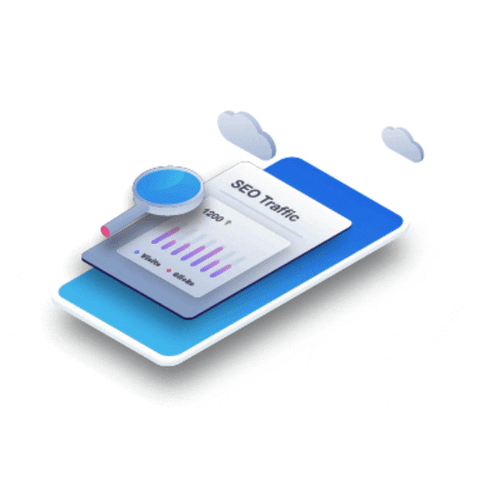
SEO 101: What You Should Know
By Lindsay Valenty -
When it comes to navigating the digital landscape, one phrase comes up over and over again: SEO. Search Engine Optimization, or SEO, can make or break your business—but how?
In this blog post, we will address the most frequently asked questions about search engine optimization, answering the questions you've likely asked Google yourself.
Let's get started, shall we?
What is SEO?
Search Engine Optimization (SEO) is like a roadmap—major search engines like Google, Bing, and others use it to get to your website. The goal is to end up on the first search engine results page because you not only have high quality content, but also relevant content.
Have you ever put an address into your map app in your car or phone and got sent on a wild goose chase instead of where you actually wanted to go? It's the same with websites, and that's where SEO efforts comes in.
Search engine optimization is essentially taking whatever your client/customer is looking for—say, "plumbers near me"—and shining a spotlight on your web pages so search engines know that your content has the answer to their query. That's how search engines work, whether it's organic search results or paid search.
How does SEO work?
Regardless of the search platform, SEO works based on three defining principles: technical SEO, on-page SEO, and off-page SEO.
Technical Optimization is the practice of finishing tasks on your website that aren't linked to content, but intended to boost SEO behind the scenes. This includes things like your site structure, mobile optimization, and page speed. This tells search engines that your structured data meets their search queries.
On-Page Optimization is the process of making sure that the material on your site is relevant and offers an unforgettable user experience through the use of relevant keywords. You can do your own keyword research using a number of keyword research tools as part of your SEO strategy.
A great way to ensure that your content includes the right keywords and formatting is through the use of a CMS (Content Management System) tool or program, which can help optimize title tags, meta tags and meta descriptions, not to mention the naming conventions of your images and videos. You also want to manage your internal link structure to ensure that as you're building links, they match your naming conventions.
Off-Page Optimization refers to the process of improving your site's search engine rankings by actions taken off the site. This is usually accomplished through the use of backlinks, which are a great way to build up your site and its reputation.

Okay, but then what?
Well, search engines use algorithms to determine which sites to serve you based on your search criteria. They accomplish this in three ways: via crawling, indexing, and ranking.
Crawling is the process by which "spiders" or "robots" (or spider robots if you wanna make it super cool) comb through your website, particularly to see if you have posted anything new that is relevant to the search. The more new content you generate, the happier the spider robots are, and the more likely you are to move up the ranks in search.
If you have pages on your site that really shouldn't be crawled, say a landing page that you've created for a special offer, there are ways you can set them up so they are left out of your site map or index (aka robot spider free zones).
Indexing is when a search engine chooses whether they want to use the information that the robot spiders just crawled on your website. If the answer is yes, it will be added to an index, which is used in the final decision stage of the search.
There are a few reasons why your site MIGHT not be indexed, and those are:
• if it's not mobile friendly
• content is a duplicate
• content comes across as low value or spam
• if it can't be crawled at all
• the page/domain don't have any inbound links
Ranking is the final stage, and the most important one. Search engines go through the index that has been created via crawling (thank you robot spiders) and ranks the results for that specific keyword.
Fun fact: there are more than 200 ranking signals that search engines use to sort and rank content. Crazy, right?
How can I rank in Google?
Excellent question, and we're glad you asked. Google search console uses a few things when it determines what sites it wants to serve for any given search: Hummingbird and RankBrain.
Hummingbird is Google's search algorithm, and it decides how to order and rank search engine results.
RankBrain is like Hummingbird's younger sibling, and is a machine-learning sub-algorithm.

There are 3 key things you can do that will make RankBrain happy:
• Optimize your content for medium-tail keywords. Medium-tail keywords are two to three word phrases, such as "digital marketing agency" or "branding ideas."
• Optimize your meta data, such as your page titles & descriptions, to increase clicks. A great rule of thumb is to include the most important keyword in the title of your page, or your CTA.
• Optimize your content for readability. Be mindful of how long your content is, and how engaging, which can affect your bounce rates.
Ultimately, Google is going to rank you based on the following three things:
• Links (if you don't have any internal links, that's a problem)
• Content (is it relevant, not too long or too short, or spammy?)
• RankBrain (does your site offer a great user experience?)
These are just a few things to consider when it comes to SEO, content marketing, and how to ensure you're doing your due diligence to get your site ranked and delivered via search. If you want to learn more, you can check out our two-part series covering on-page SEO here & here.
Our digital strategy starts with targeted SEO research and elegant, functional web design—and follows through with data-driven email marketing, digital ads, social media and more. Let’s get digital.